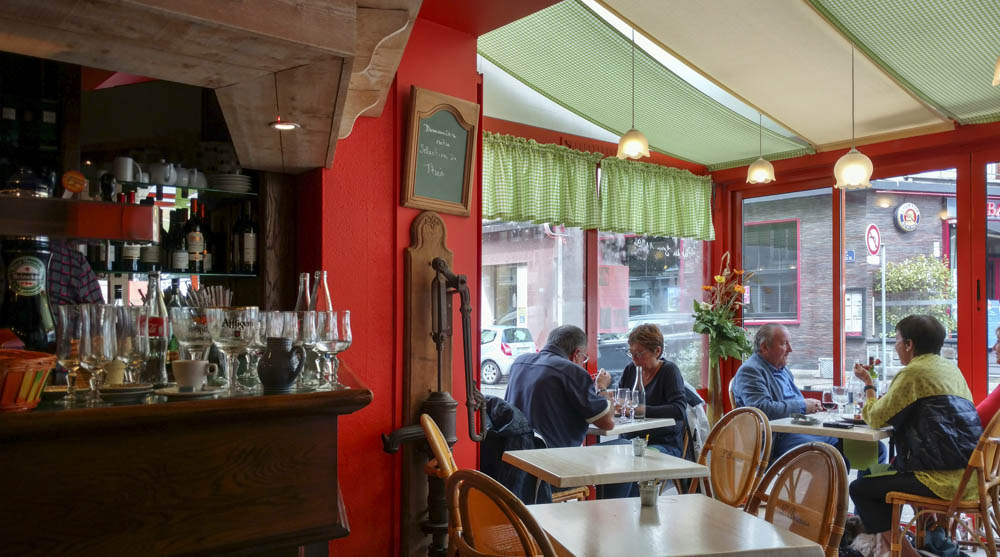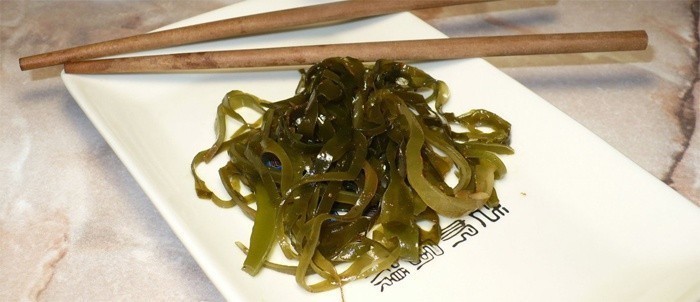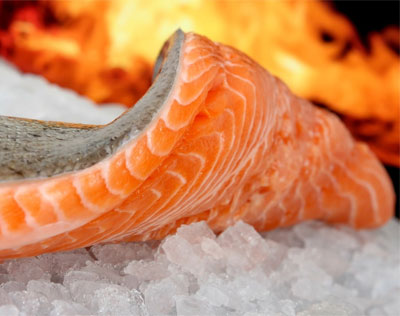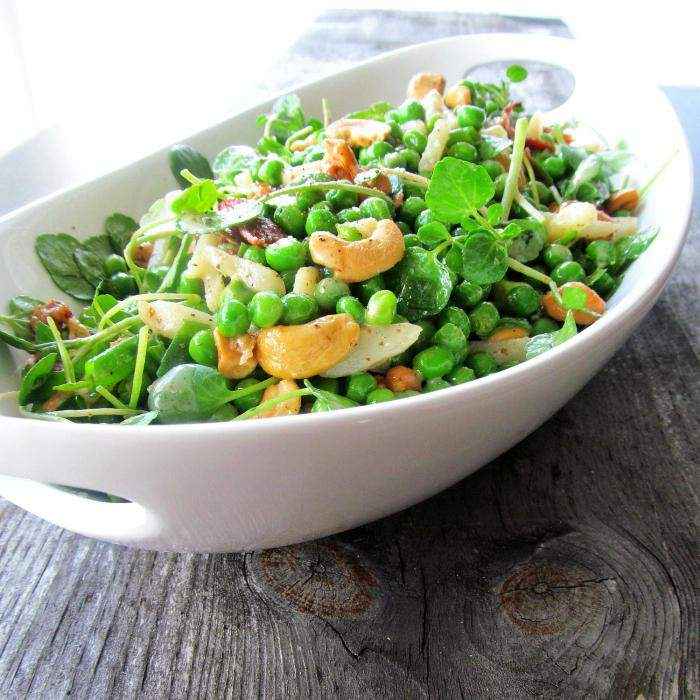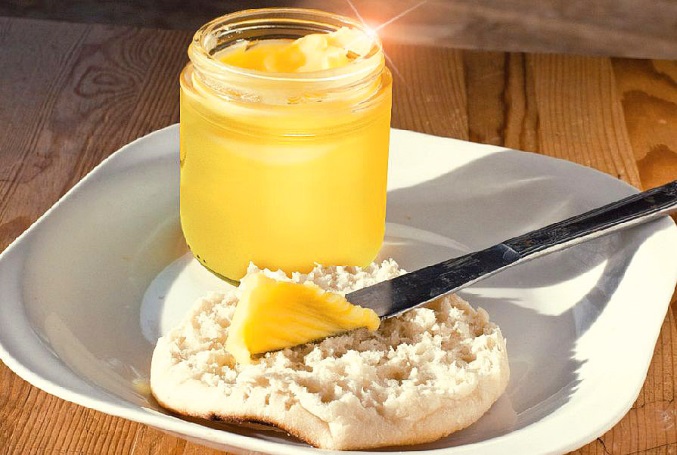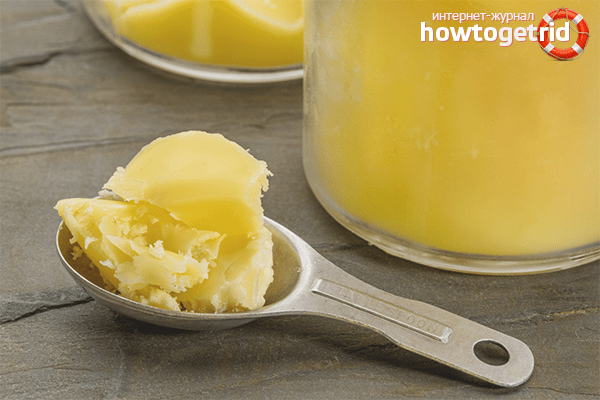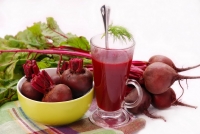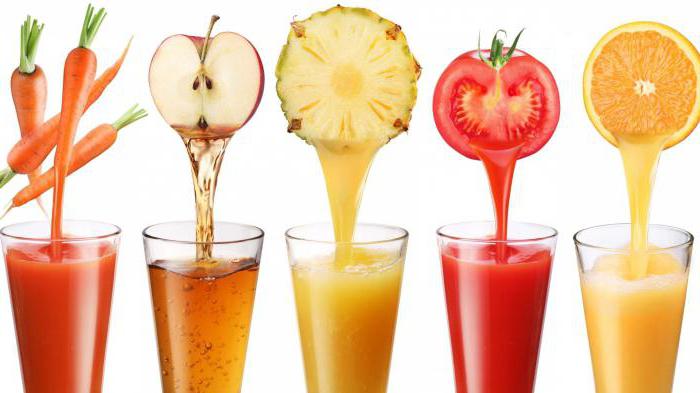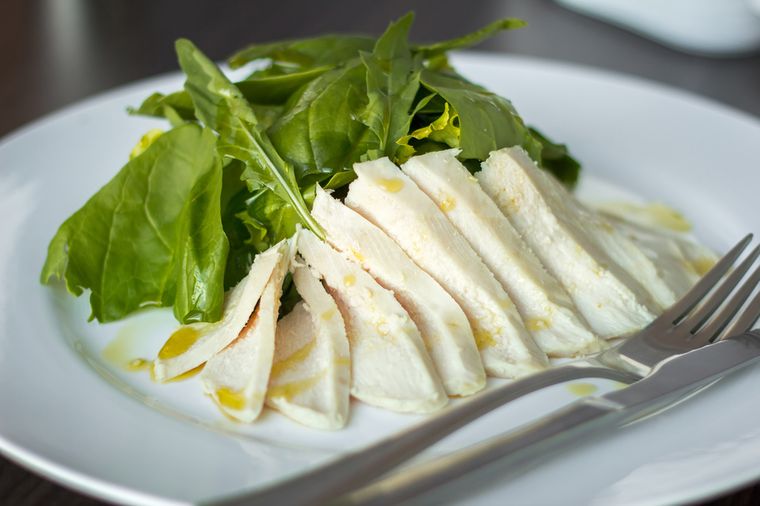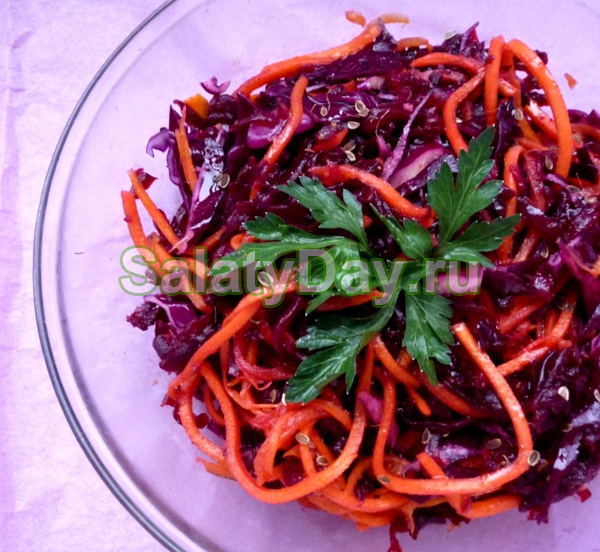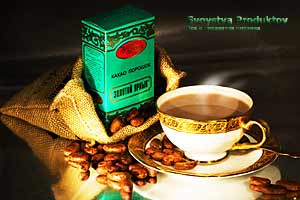Traditional french breakfast: description, best recipes and reviews. Why are French women so elegant
France is known for its beautiful language, cozy cities, chic beaches and delicious food. Food in France is a cult thing. It is believed that in the world there are 2 great cuisines: classic French and Chinese. To agree with this statement or not is up to you. And in this article we will consider the features of French cuisine, which is worth a try for any tourist, 10 interesting and tasty dishes and 12 useful tips so as not to hit the face with a plate.
- Average cost of a meal in a french restaurant - 16 euros.
- Full dinner for one person with a glass of wine - 35 - 45 euros.
French breakfast - le petit déjeuner
© ralphandjenny / flickr.com / CC BY 2.0
A traditional breakfast in France is not intricate. The French eat breakfast baguette with butter and jam / cheese / pate, croissant or bagel, or cereal. Dessert - fruits. As you can see, the dishes in the morning menu are not very diverse. Of the drinks - orange juice, tea, coffee or hot chocolate.
French lunch - le déjeuner
In many establishments in France, lunch is served from 11:30 to 13 hours. As a rule, travelers dine later and sometimes face the fact that they are refused to serve. Like, they came late, guys, they ate everything. If you are late for dinner, then head to the self-service restaurant, where you have a better chance of eating.
A traditional French lunch consists of:
- starter: salad, soup or soup puree, paste and cold appetizers;
- main course: meat or fish with potatoes, rice, pasta or vegetables to garnish;
- cheese plateand / or dessert.
Often, dessert is not listed on the menu and you have to listen to the waiter's suggestions. For dessert, French restaurants serve fruit, jams, ice cream, rarely baked goods, you can pin everything down on top of coffee.
French Dinner - le diner
The French have dinner in the interval from 19:30 to 20:45. TV channels adjust the start of their main evening television programs so that they begin at 20:45 - 21, when everyone has dinner.
For dinner in France, eat lighter dishes - vegetables, soups, etc.
- The simplest and most important advice that I give to everyone, no matter what country a person is going to, is eat where local people eat. Usually, in France they have lunch from 12 to 13 hours and dinner from 20 to 21. I understand that you are on vacation and do not want to be tied to a strict schedule, but you will find the largest selection of dishes in restaurants at this time. Travel agencies make concessions, but I do not recommend tourist restaurants to anyone - always more expensive and often less tasty.
- Take business lunches. If you suddenly do not know - this is a fixed lunch menu. You are given a choice of several sets of dishes. In each set, as a rule, 2 dishes and dessert. In France they are called “le Menu du jour”. Business lunches are a great way to get to know French cuisine without overpaying.
- If you want to have dinner like a real french, then you should first drink an aperitif, usually a wine or a Cyrus cocktail (dry white wine and blackcurrant liquor).
- Bread - an integral part of the French table. The French will not start eating without a good fresh baguette.
- But you will not find on the table paper napkins. The French use exclusively fabric. They pick them up under the tablecloth. Napkins - this is also important!
- The stronger it stinks cheese - so he is better.
- The French use knives during meals, not only to cut off a piece of steak, but also to push food from a plate onto a fork. So that the knife is also requiredlike bread, like a cheese sandwich at the end of the meal.
- Butter in France, slightly salted.
- In France, a slightly different understanding of the word "dessert"than in the rest of the world. Do not expect that after dinner you will be brought éclair au chocolat, choux à la crème, or Paris-Brest. Most often, fruit, yogurt or jam are meant.
- In France you are practically you will not find vegetariansthey probably all emigrated a long time away from the temptations of French cuisine.
- In France, it is customary to add salt and pepper to dishes to taste. The salt shaker from the pepper shaker is easy to distinguish, the salt shaker has several holes, the pepper shaker has one.

© kotomi-jewelry / flickr.com / CC BY 2.0
Do I need to tip in restaurants in France
In French restaurants, it is considered normal to tip. There is no pre-fixed cost, so it’s hard to say how much to give for tea. Everything feels like. The normal tip to the waiter for a good service in a restaurant is 10% of the check amount. In cafes or self-service restaurants usually leave 1-2 euros, as an expression of gratitude.
French food every traveler should try
- Les cuisses de grenouilles - frog legs
You can’t come to France and not try the frog’s meat. It tastes like chicken with a slight aftertaste of seafood. The French prepare frog legs with herbs, it turns out very tasty. Do not brush aside until you try.
- Foie gras - foie gras
What you should definitely try in France is foie gras - the liver of a specially fed duck. It is best to eat it fried, but if this thought scares you, then you can order a foie gras paste and spread it on a baguette.
- Escargots - Snails
Another popular French dish that causes a shudder for many at the very thought is snails. Tasty snacks fried with garlic, butter and parsley. Snails are taken out of the shell by a special fork. With experience, it even turns out not to splatter in the neighbor opposite.

© stoic1 / flickr.com / CC BY 2.0
- Boeuf tartare - beef tartare
Tartar is a dish of raw chilled beef, egg yolk, spices, onions, capers, gherkins and a bunch of additives. If you are going to take it for the first time, first take one dish for the company, for some the taste may be too unusual - these are the features of French cuisine. But for many, tartare is a real delicacy.
- Cheval or taureau - horse or bull
Or a horse and a bull. Do not rush to turn your nose off this dish. Generously flavored with wine and orange sauce, you will remember it for a long time.
- Any cheese that you don't like at first glance
Too smelly? Too soft? Too thick mold? Spread it on a fresh baguette with butter, and you will sing in a completely different way.
5 proven French dishes that everyone likes
- Croissant
Buy a croissant. Required. Fresh, still warm, tasty ... Buy it and bring it to me!
- Macaroons
Small fragrant goodies with a huge assortment of flavors. Especially wonderful with salty creamy caramel, but the rest tastes nothing. Many manufacturers have their own signature tastes.

© omarsc / flickr.com / CC BY 2.0
- French mussels
Steamed mussels with potatoes to garnish. You can eat them in classic cooking with onions and white wine, or more interesting options with roquefort and saffron.
- Duck
Roasted and stewed duck, chopped and whole, duck liver or cassule with sausages and beans - everything is delicious.
- Your favorite cheese
Not only experiment with smelly varieties. Try your favorite cheeses in France. Believe me, coming to the market to buy cheese from a person who probably milked the animal that gave milk for this cheese is an amazing experience.
10 unusual dishes of French cuisine
In this list of everything 10 dishes, but they are all unusual. I bet you never suspected the existence of most of them. This is not duck liver and not frog legs. You can try these dishes in almost any restaurant in France. Under each dish you will find a list of addresses of restaurants where, according to local residents, this dish is surely cooked deliciously.
1. Bouillabaisse

© colonnade / flickr.com / CC BY 2.0
French bouillabaisse is a fish soup, i.e. It was once considered the food of the poor. Marseilles fishermen simply cooked seafood that they could not sell. So, the main criterion for selecting fish for bouillabaisse is its unattractiveness. Google for fun what a scorpion fish looks like, and you'll understand. But in our time, bouillabaisse has entered the restaurant menu and is considered an exquisite expensive dish. There are many variations of this soup. I do not recommend ordering bouillabaisse for less than 30 euros per plate. Often soup is served in 2 sets - first a broth with croutons and spicy sauce, and then a plate with 5 varieties of fish.
Where to try: obviously in marseille. Delicious bouillabaisse is served at the Le Miramar restaurant (official website: lemiramar.fr; £ 54) and Chez Fonfon (chez-fonfon.com; £ 46).
2. Tartiflette

© heatheronhertravels / flickr.com / CC BY 2.0
Tartiflet is another bright representative of French cuisine. This is a very satisfying dish. It includes potatoes, bacon and onions, sprinkled with Rebleshon cheese. Legend has it that taxes were taken from poor peasants for milk yield. The more milk a cow gives, the more you pay. The cunning folk quickly adapted and began to milk the cows only halfway, and after checking to finish to the end. Rebleshon cheese was made from the remaining milk. The amount of cheese was as great as the reluctance to pay taxes. It was necessary to put it somewhere, and in 1980 they came up with the dish of the same name.
Where to try: in the Alps. Tartiflet is deliciously prepared at Calèche in Chamonix (restaurant-caleche.com; £ 16) and at Chalet La Pricaz (sav.org/pricaz.html; £ 15). Detailed addresses can be found on the sites.
3. Cassoulet

© wlappe / flickr.com / CC BY 2.0
Cassule dish includes stewed white beans, sausage and pork. The result is a casserole cooked in a special pot. A crisp forms on top, but inside the dish is very juicy. All this splendor is sprinkled with herbs and served on the table.
Where to try: in Toulouse at Restaurant Emile (restaurant-emile.com; £ 20).
4. Boeuf bourguignon or beef burgundy (Beef bourguignonne)

A true national dish of France with a rich history and rich taste. While the Europeans fought for a place in the sun, the Burgundians left the world political arena and, it seems, not in vain. But they came up with a lot of delicious dishes. I strongly advise you not to lean on Burgundy food, otherwise you will have to disassemble the wall of the restaurant to get you out. I’m joking, of course. But the wine-rich hot meat dish will not be joking. Many Burgundians are chubby guys, pay attention. Because it’s very, very tasty.
Where to try: in Dijon, at restaurant D "Zenvies (dzenvies.com; £ 14) and at Beursaudière (beursaudiere.com; £ 17).
5. Pissaladière

© alanchan / flickr.com / CC BY 2.0
Pissaladier is a famous fish and onion pie. Composed of onions, garlic, anchovies, olives and herbs of Provence. Someone reminds him of an ordinary onion pie, someone pizza. Call it what you want. It will not become less tasty from this.
Where to try: in Antibes (lepain-jpv.com).
6. Potjevleesch

© merlejajoonas / flickr.com / CC BY 2.0
One of the most distinctive meat dishes in France. It is based on 4 white meats - veal, pork, rabbit and chicken, all mixed with pieces of vegetables in jelly. Served with potatoes with gherkins, salad and chips.
Where to try: Al "Potée d" Léandre in Souchez (alpotee.fr; £ 14.50), Barbue-d "Anvers in Lille (lebarbuedanvers.fr; £ 16) and T" kasteelhof in Kassel (http://lvermeersch.free.fr/kasteelhof )
7. Overnight stew with vegetables (Potée auvergnate)

© Jiel Beaumadier / CC BY-SA 4.0
Pork, sausage, bacon and vegetables stewed together. Not high French cuisine, of course, but it is a simple and very tasty dish. Do you understand now why in France it is so tight with vegetarians?
Where to try: the meat in the Auvergne is well cooked in Auvergne, which is not surprising. Advise you to stop by the l "Alambic in Clermont-Ferrand (alambic-restaurant; £ 14.50).
8. Shukrut (Choucroute)

© images_improbables / flickr.com / CC BY 2.0
Alsatian shukrut is not a joke to you. While the Latin and Germanic worlds shook the district with conflicts, which periodically plagued Alsace, the locals spat on this whole policy and set about arranging the economy. As a result, Alsatians have spacious houses, flowering villages and chic national cuisine. Shukrut is a dish of sauerkraut, sausages and pork, someone cooks it with rice, someone with potatoes. There is an option with fresh cabbage, but in my opinion it is less tasty. Caution! After properly cooked shukrut, it is very difficult to get out of the table without outside help.
To try canonical French shukrut is available at the Chez Yvonne restaurants in Strasbourg (restaurant-chez-yvonne.net; £ 16) and Maison Kammerzell (maison-kammerzell.com; £ 17).
9. Aioli (Grand aioli)

Aioli is a famous garlic sauce. Grand aioli is a dish of salted cod, carrots, potatoes, shellfish, beans, onions, artichoke and, in some cases, beets and other vegetables. All this is seasoned with aioli sauce and washed down with rose wine.
Where to try: restaurants Maurin des Maures (maurin-des-maures.com; £ 15), Restaurant Balthazar (bistrotbalthazar.com) and Le Petit Chaudron (restaurantlepetitchaudron.fr) in Avignon.
10. Grilled oysters with champagne and saffron
What French cuisine without shellfish? Locals adore them. Oysters are especially fond of. Nevertheless, the British boldly replace the classic raw clam with grilled baked with herbs and champagne.
Where to try: Les Ormes restaurant in Barnville Carter (hotel-restaurant-les-ormes.fr; £ 12).
The food system in France is exactly the opposite of the sensational rule: eat breakfast yourself, share lunch with a friend, and give dinner to the enemy.
French breakfast is very modest and not without reason called a small breakfast (le petit déjeuner). Most often, it is limited to a cup of coffee and a small bun, bagel or sandwich. It is interesting to note that at breakfast the French prefer sweet sandwiches - often it is bread with butter and jam / jam.
Lunch (in French terminology “breakfast”, le déjeuner) starts at 12 noon. It usually consists of appetizers, green salad, meat or fish dishes, cheese and coffee.
Evening meal, at 6 - 7 pm, called lunch (le dîner) and also includes several dishes: an aperitif, green salad, a hot dish (meat with side dish), a cheese plate (several varieties of cheese cut into small pieces and laid out on a plate specially provided for this) and coffee with sweets (often with chocolate candies, cookies).
The culinary traditions of the French were preserved not only in good restaurants, but also in ordinary families. At festive family dinners and especially at dinners with guests, you can perfectly see the main features of French cuisine.
Before lunch, guests are offered an “aperitif” - alcoholic drinks with nuts, almonds or dry biscuits - to stimulate appetite. Lunch itself, as in the 16th century, begins with an “introduction”: vegetable, meat or fish snacks. Soup is now rarely eaten, more often in the village. The basis of the festive city dinner is fish, meat or poultry with the appropriate white or red wines.
Abroad, the French are considered to be frog lovers, and it is no coincidence, because the French are really willing to eat the delicate white meat of the frog's hind legs, reminiscent of chicken meat to taste. However, for a family dinner, this is quite an expensive pleasure, so frog legs do not eat themselves every day.
In an ordinary French family, they usually eat steak with fried potatoes, stew with vegetables, rabbit stew or. Along with beef steak, horse meat steaks are also prepared, which is sold in special butcher shops.
Of the exotic dishes for the Russian people, the French love shells and snails. Some shells are eaten raw - they resemble oysters. Others cook specially - their meat is similar to the meat of crab or crayfish. A very tasty dish is obtained from large escargo grape snails: they are baked in oil with parsley and garlic and served right in the sink.

For the main family holiday - Christmas - in the old days they cooked a fried boar. Then he was replaced by a pig, now more often a turkey. The Christmas table is usually decorated with an oyster dish and a special, oblong cake - “Christmas log” . The final part of the holiday dinner consists of green lettuce, cheese, fruits, sweets and coffee. After coffee, guests are offered cognacs or liquors; they are collectively called "digestif" - facilitating digestion. If the aperitif opens the holiday dinner procedure, then the digestif completes it.
These are the simple traditions of an ordinary French table! Do not forget to check out our French recipes page. This is a selection of fairly simple and easily implemented culinary recipes for which you do not have to spend a lot of money on unique seasonings and ingredients. You can easily cook everything yourself!
In the preparation of the article used materials of the book V. Smirnova “France: traditions, people, impressions”
Do you like the article? to always be in the know.
If you decide, then you have to get used to the new formats of eating food. Firstly, what the French eat is very different from what Russians are used to, and sometimes very contrasted. Secondly, in France they often talk a lot and eagerly about food, and if in Russia they often hastily put a sandwich in their mouth thinking about their favorite work, then in France the opposite is true - work will wait if the Frenchman is going to slowly chew his favorite baguette with a slice cheese. Thus, there is a difference not only in your favorite dishes, but also in the culture of consumption. And if you decide live in France for permanent residence, then all this will be an important point for you. However, getting used to the new format and the new attitude to food in France is not difficult at all, as well as new dishes. Indeed, most of the dishes in France are very tasty, and even if it’s not so easy for you to switch to them at first, then you will surely enjoy eating exactly what France offers you and dishes from other countries, including dishes from your home country, to which you are accustomed initially, will no longer seem so delicious to you.
Besides taste, almost every French dish is healthy. And the French themselves often discuss the usefulness of different foods and make sure that in this regard they lead a healthy lifestyle. So - it is not only tasty, but also healthy.
What do the French like
Here is a sample list of those foods and drinks that the French are crazy about.
1) Coffee. The first place really is rightfully given away coffee, because this drink is the most popular in this country. The French drink coffee several times a day, literally - at every opportunity. Morning is unthinkable for a Frenchman without coffee, but even at lunchtime the Frenchman will certainly miss another cup, and will not refuse in the evening.

At the same time, the French like to drink black espresso, without milk, despite the fact that it is harmful to the stomach. For lovers of gourmet coffee, Italy is more suitable with all sorts of its cappuccinos, in France they drink quite “hard” coffee - but in large quantities. If you come, you have to get used to coffee, too, because it is such a drink that the French drink constantly.
2) Cheese. Cheese is rightfully included in the list of the most favorite foods and dishes for the French. Yes, sometimes cheese can be an independent dish, in many cafes and restaurants you will be served the so-called "cheese plate" with pieces of cheese of different varieties. In France, just an unthinkable amount of different varieties of cheese, in fact, it is the cheese capital of the world. Arriving, you will learn about such varieties of cheese as Camembert, Roquefort (however, it is also well known abroad), a chevre. Cheese is added to salads and even soups, so you will find its presence in almost every French dish. To love cheese for someone who came to France is the number one task.
3) Vegetables. The French eat a lot of vegetables because they are good for health. Almost every week, the French go to the market for fresh vegetables. At the same time, vegetables on the market are more expensive than in stores, but a conscious Frenchman is willing to pay more to get proven quality in the end. Many French people are personally familiar with the farmers from whom they buy products; there are certain attachments and addictions to the products of a particular supplier farmer.
Many vegetables that the French love, require getting used to them. For example, when cooking, a very large amount of greens is often used, which is very useful, but not everyone likes it. Eggplant, zucchini, potatoes and tomatoes - this is what is familiar to the Russian and dear to his heart. French fries, by the way, are a very common dish, which is often cooked in France. And a very tasty dish.
4) Meat dishes. Meat in France is also eaten often and a lot. Pastes and steaks are popular. Dishes such as a bloody steak with toasted crust, vegetable stew with meat are common. Most often in France, poultry and beef are used.
5) Seafood. The French here differ from most representatives of other nations, in terms of both love for products of such a plan and their diversity. But the Frenchman’s table can often see oysters and shrimp, scallops and other seafood. Also, the French, as you know, love frogs, which, however, do not belong to the seafood, but not far from them. Frogs, however, are a delicacy, and indeed are designed for a narrow circle of lovers, and if you come to France, then do not be afraid that frogs will be served to you on the first day. By the way, French frogs to their taste do not differ much from the same oysters, while they are specially grown for meat in environmentally friendly conditions in special ponds, and the legs of such frogs mainly go for meat. If you like seafood, then there is a big chance that you will like the frogs.
6) Wine. As for this noble drink, France is also its homeland. It is here that there are most of all vineyards that supply material for the production of the best varietal wines in the world. However, even the cheapest wine in France is very tasty, you can buy a bottle for only 1-2 euros - and already enjoy the full-fledged taste and aroma. This is because in France, without exception, all wine has a natural origin. If you come live in France for permanent residence, you can be sure that not only do not get poisoned by local alcoholic products, but also get extraordinary pleasure from its use. France is a country of winemakers, and almost every self-respecting Frenchman knows wine at one level or another. You can also with the vineyard, if you want, and produce your own wine.

For all that, the French usually don’t drink much, their goal is not to force themselves intoxicated, namely to enjoy the wine. For this reason, they most often drink it in small sips throughout the evening and rarely drink more than one glass during this time. And it is very french. The Frenchman can drink alone, going out with a glass of wine on the veranda and sipping it in small sips, looking at the people passing by and thinking about his own. This enjoyment of life, coupled with wine, is very characteristic of the French, who in general can be called one of the most cheerful nations on the planet.
7) Sauces. Sauces from the arsenal of French cuisine, too, cannot be ruled out. Sauces are served with almost any dish, especially meat. But you can also see interesting and unusual sauces that are served with vegetable dishes. In fact, for almost every dish in France you can choose your own sauce. Which, without a doubt, makes French cuisine much more interesting and varied.
8) Soups. In general, soups in French cuisine do not occupy such a privileged place as in Russian cuisine. However, the French still love soups, however, mashed soups are the most popular here. An interesting fact is that in almost every soup, again, cheese (in grated form) and small crackers are added. This makes French soup refined and unique in its appearance. The French eat their soup, like all other dishes, exquisitely and gracefully - slowly and enjoying every drop.
9) Baguettes. In general, France loves pastries, and despite this, the French are one of the most slender nations in the world. Baguettes were invented by bakers, according to one legend, during the war years, and the advantage of baguettes was that they are baked very quickly. But even to this day, baguettes in France are very beloved. They are made, as a rule, without any additives - only flour, yeast and water. If you want to get up early in the morning to catch a fresh hot crunchy baguette in the bakery and eat it at breakfast with a cup of coffee, you should know that you are already half French.
findings
If you were invited to visit in France (in a cafe it’s easier, since you can order your usual dishes there), then get ready for a lot of new things. The French rarely put a lot of dishes on the table, but they will probably treat you to good wine, vegetables and a sweet dessert. The French hosts will not force you to eat everything that is available - eat and drink a little and keep up the conversation, praise what you like, and you won’t have to try what you don’t want.
What the French don't like
Now let's talk about which dishes the French don't like and which ones you are likely to say goodbye to when you come to live in France for permanent residence. These dishes should not be offered to the French - some of these dishes they basically do not accept, and some simply do not understand. The sad thing is that almost all traditionally Russian dishes are on this list.
1) Tea. This drink is drunk on the other side of the English Channel - in Britain. As for the French, they simply do not like tea. Almost never he can be found in a Frenchman’s apartment, although in a cafe, most likely, tea will be on the menu. But even that, for the most part, is for foreigners. The French were so unaccustomed to tea that some even almost never tasted it. In addition, tea would undermine the "coffee monopoly", which rules here almost endlessly. In short, do not offer tea to the French, but rather make a cup of coffee for them!
2) Fatty salads. The salad that the Russians call Olivier and are proud of its supposedly French origin is actually a nightmare for any Frenchman! Because such a salad contains everything that contains a lot of calories - eggs, sausage, mayonnaise. For a Frenchman, such a salad is simply unacceptable. Like a herring under a fur coat, which among the French, knowing about such a salad, is considered a very harmful dish, and at the same time not very tasty. If you want to make a salad for the French, cut any vegetables and sprinkle them harder with greens - your French friends will probably not refuse.
.jpg)
3) Okroshka. Such a dish seems normal only for Russians. Indeed, kvass (a product that is already unusual for foreigners), in which vegetables, eggs and sausages are floating, looks frightening and unappetizing. If you offer a Frenchman okroshka, for the first time, divide it into a salad and kvass in a glass. However, the dry component of okroshka is too much like olivier, and therefore it is very doubtful that the Frenchman will eat it.
4) Russian soups. Yes, and the rich Russian soups also do not like the French. Firstly, they are used to mashed soups, and in Russian soups everything that was sliced \u200b\u200bthere can be seen clearly. Secondly, the French believe that cabbage soup with sour cream or mayonnaise is literally too fat. If you want to surprise the Frenchman with soup, then simply chop all the ingredients with a blender and the Frenchman will be happy.
5) Mayonnaise. Despite the French names for Russian mayonnaise, this sauce (and this is a sauce) seems to the French too fat and artless, while they have dozens of other sauces in their national culture - more tasty and healthy, in their opinion.
6) Buckwheat. It would seem that this is not a dish, but just a food product. Moreover, buckwheat has many proven beneficial properties. But the French simply do not grow it and do not know. You will hardly find buckwheat in a French store; moreover, you will need to explain for a long time what it really is. If you like buckwheat, bring it to France with you or look for specialty stores for those whose souls yearn for the national Russian flavor.
7) Dairy dishes. Milk and in general all products and dishes based on it are not very popular in France. Excluding, of course, cheese, but that's another story. Semolina, milk vermicelli and many other dishes that seem international are also unknown in France or simply have not taken root. Despite the fact that the same semolina or oatmeal porridge is a much more wholesome breakfast than what the Frenchman usually eats for breakfast - cheese with baguette and coffee. By the way, the French do not eat oatmeal on water, unlike the same British.
8) Jellied meat. One of the brightest Russian dishes to the French, again, is incomprehensible. It looks unusual and frightening at first glance, and its taste is peculiar. Despite the fact that the French, in principle, love all such dishes that have a liquid-solid consistency, such as puddings and jellies, but their soul usually does not accept jelly.
findings
Thus, if you receive French guests, then try to cook not what you are used to, but what they are used to, so as not to end up being the heroes of the fairy tale about the crane and the fox. An ideal set of dishes for meeting French guests is a vegetable salad, a plate with lots of cheese, good wine and any meat dishes. This will allow both you and your guests to have a good time at the meal and conversation.
France, of course, is a gastronomic country, famous for its high cuisine, and cafes and restaurants have the same symbol as the tower of Monsieur Gustave Eiffel. However, an interesting question that interests many, is how with such an abundance of sauces and desserts, the French continue to be one of the most harmonious nations in the world.
Do not forget that the dishes served in gourmet restaurants are significantly different from the products that the French consume in daily life, but there are several features of the diet that do not change for generations. My friend and I recently sat down and listing to each other who noticed something during the year of living in France. Surely you will have other observations. We proceeded from the way our friends and friends of friends eat. So let's go!
1. Food by the clock
Despite the arguments of scientists calling for fractional five meals a day, every real Frenchman traditionally eats 3 times a day. For breakfast in France, toasts or pancakes with butter and confiture are taken. Lunch is a sandwich and a small cake from the nearest bakery or a set menu in a cafe. Dinner is diverse and depends on the tastes of a particular family.
2. Cheese for dessert
French love for cheeses is not a cliche, but a feature of national thinking, which has been taught since childhood. Each child is able to determine the type of cheese by appearance and smell and tell how and with what to combine it correctly. And yet, cheese is a dessert that is customary to eat with fruits, berries or nuts after dinner or Sunday lunch, and not in the form of a sandwich for breakfast, as they like in Russia.

3. Bread and water
Baguette and a jug of water are always present on the French table. Most often this is plain tap water, which you and the restaurant will definitely bring for free along with a baguette cut into a wicker basket. By the way, the consumption of water during meals is another habit that runs counter to modern nutritional rules, according to which you should not drink during meals and immediately after it.
4. Late dinner
In most French families, an evening meal begins around 20 hours and, according to recent studies, more and more often goes to watch your favorite TV shows. However, despite such a nutritional schedule, the presence of fresh vegetables and greens in the diet helps the French stay in shape. Leaf lettuce is another must-have in every refrigerator. It is most often eaten simply with olive oil and vinegar, sometimes adding cherry tomatoes and grated wet.

5. Quality in favor of quantity
In this confrontation, quality always prevails. An early Sunday morning trip to the market, leisurely conversations with sellers, the choice of only the freshest farm products - this is a mentality that is drowned out by a trip to the nearest supermarket only in case of emergency. And no semi-finished products. The culture of semi-finished dishes is alien to the true French. But the fashion for bio-products that are grown on ecologically clean fields is becoming more widespread.
6. Coffee every day
Black coffee in France is more than a drink. Everyone drinks it, always and everywhere. In the morning, the French descend after him to the nearest cafes or bakeries, drink it during the day to cheer up, have a snack if there is no time to have a bite, and, of course, after a meal. By the way, ordering coffee after lunch or dinner is perhaps one of the basic rules of French etiquette. Moreover, the more expensive the restaurant in which you have lunch, the more rigorously this rule is observed.

7. A clear sequence of dishes
No matter how busy modern life is, serving and serving dishes are observed impeccably: a light vegetable salad with vinaigrette dressing, main course, fruits and cheeses for dessert. It is worth noting that the French never eat fruit and berries separately as a snack, only occasionally combining them with cookies during an afternoon snack. But it is rather the prerogative of children and adolescents. Adults have a cup of strong black coffee.
8. The minimum amount of time at the stove
Daily nutrition is very different from high French cuisine, where a lot of energy and attention is paid to the cooking process. In the everyday life of the average Frenchman, the time allotted to stand at the stove is limited to twenty minutes. This is due to their love of fresh, thermally unprocessed products, which they perfectly combine with meat snacks. Ham, raw smoked sausage, pastes and all kinds of cured meats occupy an important place in the diet of a real Frenchman, and fish and meat steaks are more likely the main course of the day.

9. With friends and without
The well-known French concept of "savoir vivre", the ability to live, of course, includes a culture of food. This is not just a process of absorbing food in order to saturate the body with vitamins and minerals, but also a pleasure that can be enjoyed alone on the sunlit terrace, or in the company of friends and colleagues at a large table. Another feature of the French mentality is the so-called "aperos", aperitifs to which they like to invite to their home. In this case, all kinds of chips, nuts, sliced \u200b\u200bcheeses and other snacks are put on the table.
10. Glass of wine
If you think that the idea of \u200b\u200bwine is limited to the simple rule "white for fish, red for meat", you are mistaken. The French choose wine not only for each specific dish, where even the served sauce can change the choice of a drink, but also for the event, time of day, and temperature outside the window. Every resident of France must have at least a small wine stock, his own collection, which is constantly growing along with rising incomes and the standard of living of the Frenchman.
Consumption ecology. Life: In France, children do not have the right to open the refrigerator and take whatever they want from there ...
The French do not snack. And their children too.
According to the recollections of grandmothers, in our villages, too, did not have a snack. “Squeezing food,” “nibbling” was considered unacceptable and severely punished. You can often hear: “don’t eat it, you will ruin your appetite!”, “You need to whet your appetite”, “eat only at the table”. All this is a reflection of traditional folk culture, for which snacks were unacceptable. I note that there were no refrigerators, and bars with hot dogs were not sold.
A similar tradition has been preserved in many countries. Unfortunately, in Belarus such a tradition is destroyed and there is an aggressive imposition of “healthy snacks”. For an ordinary person, there is no “healthy snack”, it is as absurd as a “healthy drug". A rare exception can be made for athletes, but not about that now.
According to statistics, 72% of women snack on chips during the working day with chips, crackers, sweets, often explaining that these goodies are the only thing that brightens up their working hours. Many office workers are forced to have a bite to eat right at the desk, since they cannot afford a full meal due to heavy workload and a large amount of work.
In the States in the 50s of the twentieth century, “people had breakfast, lunch and dinner. They ate at home, the whole family at one table ... Snacks were the prerogative of children and adolescents - an additional opportunity to feed a growing body. This wasn’t accepted by adults, ”says Meredith Lewis, a nutritionist from Orlando. But snacks gradually became the norm, and, as statistics show, this happened in the same 1980s and 1990s. Even worse, the calories obtained during a snack, as a rule, are not compensated by a decrease in the calorie content of the main meals: we do not consider it necessary to reduce portions at lunch or dinner due to chewing all day.
In many respects, this norm is formed by the food industry, the purpose of which is to sell more food. With three meals a day, you can’t sell much, so marketing has focused on eroding traditional food and increasing the number of times.
Aggressive introduction: "Do not slow down - sneak", "you are not you when you are hungry." The introduction of new behavioral habits: popcorn during the movie, chips with friends, etc. The inclusion of "liquid calories" - soda. Yes, these are also calories and also a snack!
Outside America, cultural norms tended to reduce the risk of conditioned reflex overeating. Snacks are condemned in the traditional culture of countries such as Japan, Turkey, France.
Countless publications based on research and pure theorizing have tried to explain the so-called French paradox that the French are less likely to suffer from cardiovascular disease and obesity than Americans, although they consume more fats. According to one theory, the thing is that in France they cook on healthy olive oil. On the other - a secret in red wine. The third claims that the French are healthier because they have less stress than Americans, the fourth explains this phenomenon by genetic differences in metabolism. The answer is simpler: the peculiarity of food in France is that the French do not snack.
Note that according to the latest statistics, French women are recognized as the worst Europeans. According to the sociologists who conducted the study, they can be classified as an exclusive category. The index of body mass index of French women, the ratio between weight and height, is recognized as the lowest in Europe. It is 23.5, while the proportion among residents of Ireland is 24.5.
Another nutrition factor in France that protects the French from obesity is the historically established tradition of eating two or three times a day, with family or friends, without snacking in between. For a long time, French restaurants even served customers only at the time that was considered traditional for lunch and dinner.
In France, we still maintain a very strict nutritional structure, ”France Bellill, who studies obesity at the Paris hotel Dieu clinic, told me.
Do your cultural traditions prevent snacks between meals? - I specified.
Yes exactly. From childhood, the French know that this cannot be done. It is not right. Bellillus often tells his students: “Well, didn’t anyone bring anything edible to the audience?” If we were in America, you would probably come with coffee, donuts and chocolate bars. ”
Not that in France. “No one would have thought of bringing food to the audience,” she adds. “They never did that, and they are not attracted to such an idea.” In our environment, nothing provokes the wrong food at the wrong time. ”
Alas, the norms of behavior and nutrition in France, which provided protection against overeating, requiring us to eat only at certain times of the day, are blurring outside of America.
Even in France, snacks, fast food restaurants and other temptations already appear. As the concept of the accessibility of delicious food is exported from overseas, it becomes obvious that conditioned-reflex overeating does not take into account state borders.
Jean-Pierre Poulin, head of the Center for the Study of the Hospitality Industry at the University of Toulouse (Le Mireille), sees signs of a gradual cultural drift from structured nutrition to what he calls stray food. He believes this movement is the destructuring of French food traditions. Although stray eaters still have lunch and dinner with family or friends, they do not miss the chance to eat alone several times during the day. Frans Bellil noticed the same trend. “Food-related signals are becoming more numerous and more aggressive,” she says. As a result, obesity is beginning to threaten the French, and this is especially noticeable in children.
Note that the classic French parenting in the field of nutrition in France does not allow them to bite:
1. In France, children do not have the right to open the refrigerator and take whatever they want from there.They must ask their parents for permission. This not only prevents children from “biting”, but also helps to maintain order in the house.
2. In France, it is not the children who decide what will happen for lunch or dinner.No one offers a choice of dishes. All family members eat the same thing. Trying this method is safer at home. If the child is not eating something or has barely touched, react calmly. Do not offer another meal in return. Suppose a child is just beginning to get out of his childhood nutritional restrictions. Make life easier for him - prepare dishes that all family members like, and then gradually introduce new ones into the diet.
3. Perhaps the main principle of the French approach to baby food is that the child should try at least a piece of what lies on the plate. I am sure that not all French families consider this rule sacred, but I have not seen such a rule.
Try to imagine a “taste rule” as a law of nature — the same gravity. Explain that our tastes are shaped by what we eat. If the child is nervous and does not want to try something for the first time, invite him to at least smell a piece (maybe he will take a bite). Offer only one new product each time. Together with him, serve the dish that the child likes.
Watch this process, but don't be like a jailer. Keep calm, and even better - turn everything into a game. After the child has finally swallowed the treasured piece, praise him. React neutral if he doesn’t like it. Never offer another meal in return. Do not forget that your game is designed for the long term. You don’t want the baby to eat the artichoke once in a lifetime, and then under pressure. Your goal is to gradually teach him to love artichokes.
4. Even if some product is unsuccessful for your child, do not give up and after a while offer it again. Add broccoli to the soup, serve with melted cheese or fry in oil. Perhaps broccoli will never be your child’s favorite dish, but each new shade of taste increases its chances of becoming a familiar product. And then you will safely include broccoli in the family menu. Of course, a child does not have to love all foods. But at least you will give a chance to each of them.
5. The French talk a lot about food.This is part of the food culture in France. These conversations help them instill in their children the idea that food is not only the source of vital activity of the body. Food is an interesting taste experience.French childcare manuals offer not to limit the conversation about food with children to just “like it, don't like it”, and advise asking questions: “Are these apples sour or sweet?”, “How does the taste of mackerel differ from the taste of salmon?”, “What is tastier : red leaf lettuce or arugula? ”.
Think of food as an invitation to talk. If the cake suddenly fell apart or the roast turned out to be inedible, laugh at it together. In the supermarket, walk along the grocery rows with the child, invite him to choose fruits and vegetables.
